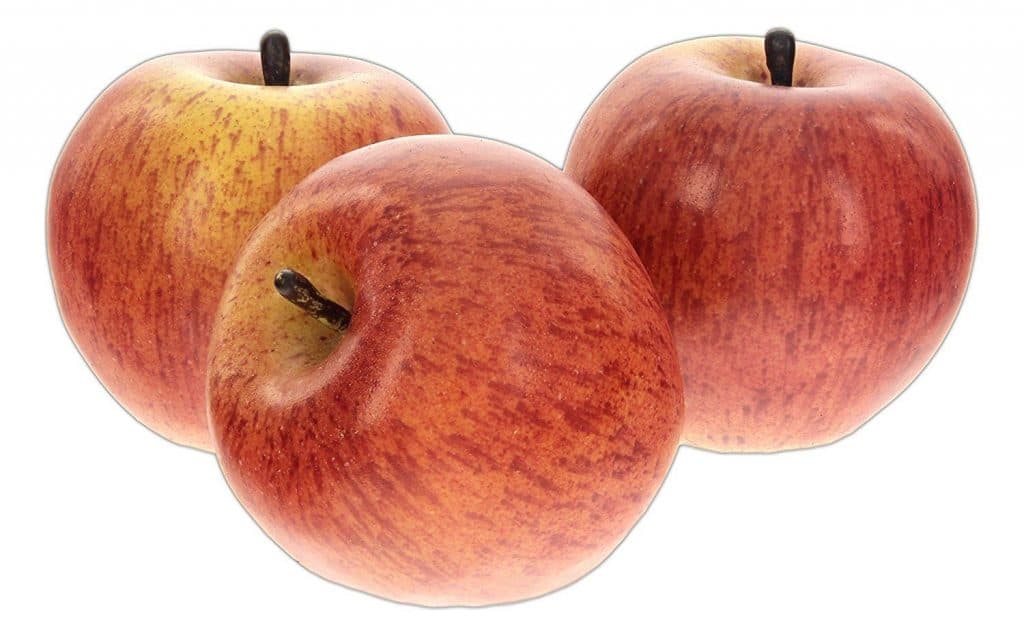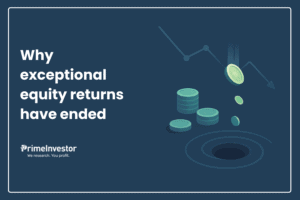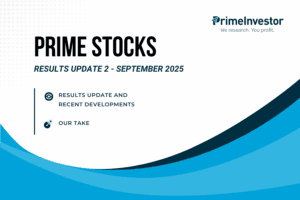With the RBI’s package to tackle the current Corona virus pandemic, we wrote about the already low interest rates on deposits going down further. While you can still seek solace in small savings schemes, at this juncture select pockets of debt funds also offer opportunities for those with a minimum 2-3-year time frame. We have therefore crafted a portfolio of 3 funds for you to optimally take exposure to quality credit and gain from a rate fall.
Before we move to the portfolio, we’d like to discuss why we picked these categories of funds.

The reasoning
First, with the government as well as the RBI’s stance to do all that it takes to keep the economy ticking, we are in for a period of prolonged low interest rate. The RBI has kept an accommodative stance suggesting that it would not hesitate to cut rates further, depending on how things pan out with regard to the impact of the Corona virus.
Hence, there are returns to be made as the spreads (the difference between corporate bond yield and gilts) shrink, as risks lower. We looked at how you can safely and optimally participate in this rally triggered by falling yields.
Second, there was an unusual spike in short-term yields causing NAVs of very short-term funds like liquid and ultra-short to fall a week ago. We wrote about this last week. The RBI’s recent rate cut as well as its announcements on related fronts immediately reversed this concern. Just to give an example, 3-month CDs (certificates of deposits) that had spiked a week ago and stood at 7.5% (March 26) eased to 5% (a 250-basis point fall) on March 27, following the RBI announcement. At the same time AAA-bonds (3-year duration) eased by 125 basis points to 140 basis points over gilts. In other words, the 3-year duration bonds did not ease much, leaving more room for a rally.
This 3-year window therefore works well for demand of medium tenure papers of 2-5 years than for long-term papers. Because of this, we believe that medium-term bonds could provide more sustained returns than pure long-term gilt, which otherwise normally sees rallies during falling rates.
Third, interestingly the RBI has opened a 3-year window (targeted long-term repo operations) of Rs 1 lakh crore. The result of this operation will be that banks can borrow at repo rates to deploy them in investment grade bonds and commercial papers. It simply means borrowing at very low rates and investing at higher rates for banks. This move has been done specifically to provide liquidity, demand and stability to the bond market that was otherwise drying up. This 3-year window therefore works well for demand of medium tenure papers of 2-5 years than for long-term papers. Because of this, we believe that medium-term bonds could provide more sustained returns than pure long-term gilt, which otherwise normally sees rallies during falling rates. Long-term gilt may also continue to see uncertainty arising from the fiscal deficit deviation that the nation may undergo post the pandemic.
The choice of funds
To arrive at the category of funds to play the 2-5-year space, we:
- Stayed clear of credit risk funds. What we do know is that credit risk is a strict no at this juncture. Working capital stress and loan defaults, possibly even on the retail side, could trigger a spate of downgrades post this pandemic notwithstanding the 3-month moratoriums.
- Avoided other longer-term categories where risk could lurk. While medium duration funds will otherwise fit into our thesis, the fact that they can take credit risk means that we stayed clear of those as well.
- Removed gilt funds for reasons explained above – namely, there is a more sustained rally to be had in corporate bonds
We aimed to further reduce risk even in corporate bond funds, as the next few quarters may witness rapid deterioration in credit quality, pushing even AAA-rated companies down the credit risk path.
This left us with banking &PSU debt funds and corporate bond funds, as they score on both duration and low credit risk. On this front:
- We aimed to further reduce risk even in corporate bond funds, as the next few quarters may witness rapid deterioration in credit quality, pushing even AAA-rated companies down the credit risk path. So in the corporate bond funds, we’ve tried to ensure that our fund choice has limited NBFCs barring those that are very large, has little to no perpetual bond, has a bias for PSU bonds and has bonds of very large, established companies. We picked funds that held instruments that offer enough liquidity.
- These funds had to also pass our usual research filters and portfolio quality filters.
We then built a portfolio of funds across our stated tenures. It is noteworthy that all 3 funds are already part of our recommended Prime Funds list.
| Fund | Category | Avg. maturity (Feb-20) | 3-year returns (annualized) |
| Axis Banking & PSU Debt | Banking & PSU Debt | 2.3 years | 8.50% |
| IDFC Banking & PSU Debt | Banking & PSU Debt | 3.02 years | 8.35% |
| HDFC Corporate Bond | Corporate Bond | 4.08 years | 8.17% |
Returns as of March 27, 2020
The above funds need to be considered as a portfolio (and not as individual investments) for 3 reasons: one, it helps diversify your risk across fund and fund houses. Two, the funds do not have the same strategy and you therefore get exposure to different strategies. Three, it keeps your exposure across various tenure buckets within the medium duration space.
Axis Banking & PSU Debt – This is among the most consistent funds in this category beating its peers 81% of the times when 1-year returns were rolled daily for 3 years. With limited volatility and high exposure to quality PSU names, this fund has been adept in keeping its duration in line with rate movements. For conservative investors and those with a time frame of 2-3 years, we would recommend taking 40-50% exposure to this fund among the 3-fund portfolio. For the rest, it can be a third of your portfolio.
IDFC Banking & PSU Debt – This is among our better rated funds, owing to its ability to capture upsides better. However, this fund has a history of being more volatile than the Axis fund mentioned above. Barring the top 1-2 instruments, this fund has diversified its portfolio across close to 170 instruments to reduce risk of concentration. Its February portfolio’s (last available) average maturity is slightly higher than Axis and it appears to be gaining marginally higher in the uptick. Please expect some volatility in this fund. Up to a third of your exposure can be allocated to this fund.
HDFC Corporate Bond – This is among the most consistent funds in the corporate bond category and is known to deftly make medium duration calls while also looking for quality accrual. From 1.73 years of portfolio maturity in October 2018, the fund quickly pushed its maturity to 3.2 years ahead of the rate cut that began in February 2019. The fund has a track record of beating its peers 100% of the times when 1-year returns were rolled daily for 3 years. It currently has about 12% in gilts which we think is a positive today to meet any liquidity requirements, given the present state of poor trading in corporate bonds. This fund can be a third of your portfolio if your time frame is 3 years or above. If you are a conservative investor and have higher exposure to the Axis fund, then keep this to 20-25% of your portfolio.
Please note that if you have very low time frame (less than 2 years) you should stick to bank deposits or liquid/ultra-short funds. While the returns in those options may not be optimal, they will provide lower volatility and safety than this portfolio. This is also not an income generating portfolio and is meant to seek capital appreciation for at least 2-3 years.






25 thoughts on “Prime Strategy: 3 funds to beat the low-interest rate regime”
Vidya ..was checking this article and review on this fund on Moneycontrol .. Does this hold good after 4 months and left over rally for this year?
Apart from High AuM – and low expense ratio.. For 2 to 3 year return I was comparing to a Liquid fund ( Nippon or Parag parikh) – Is this correct.. or I m comparing Apples to oranges
Comparsion may not be appropriate as liquid funds cannot take even some duration call. But to answer your question, yes it very much holds good. thanks, Vidya
Do these funds not carry interest rate risks in the current scenario? Issue is most Debt investors are looking for better than FD returns with no risk and better taxation .. This combination seems very rare
Regards,
Praveen
I think we have very clearly stated why this a duration call at this point. Besides, duration risk is high in long term gilt funds and very litle in medium duration funds with 2-3 year maturities. Besides, if you want zero risk, and great taxation I think nothing other than cash will work 🙂 Thanks, Vidya
I Observe The NAV of Axis banking and PSU debt fund is negative for 1 week -0.66 . Also NAV was going down some times . So far I believe the NAV will never go down any moment for this type of fund. Can you please Clarify . Thanks
Hello sir, ALL categories of debt funds can have negative returns on daily basis based on the yield movement everyday. Even liquid funds have, leave alone baking & PSU. Please read our article here: https://www.primeinvestor.in/why-are-liquid-fund-returns-falling/
In future, for any observation on specific funds in our list, please write to [email protected] as a subscriber.
thanks
Vidya
Vidya, Is this investment option good for NRIs considering the Tax implication. Till what tax slab it is advisable.
Hello Sir, It will be, if you hold for at least 3 years – that is if you get indexation benefit, it will likely be better than locking into bank FDs now. With long term (over 3 years) your taxation will be 10% without indexation. For lesser times it depends – 2 year time frames – at 20% tax bracket, you may be marginally better off than bank FDs. At 30%, can’t be sure. Thanks, Vidya
Thank you Maam, As ones Asset Allocation increases towards Debt as we near retirement and with frequent rebalancing, looking for more such Articles to balance a large Fixed Income corpus beyond bonds, deposits, EPF PPF with a combination of low risk less return Funds
Regards,
Thank you Vidya Maam for the suggestions. What are the low risk fixed income options for non senior citizens apart from PPF/EPF. Term deposits are not tax efficient. Even though liquid and money market funds are recommended for the short term, can one hold them as part of their long term fixed income portfolio..
Regards,
Praveen
Hello Sir, RBI taxable bonds are available. We wrote about it. Check here: https://www.primeinvestor.in/can-you-get-high-returns-with-a-government-guarantee-you-can-with-this-debt-instrument/But can’t be sure when those rates will fall. ALso check our deposit section: https://www.primeinvestor.in/best-fixed-deposits
Also, Please check our debt options in our research recommendations: https://www.primeinvestor.in/best-mutual-funds . For low risk you can look at our less than 1.5 years and 1.5-3 year options.
Use a combination of the above.
Your second question – yes you can, as long as they have high credit quality and you don’t mind slightly lower returns for lower risk in a rate cut scenario.
Vidya
Hello Vidya,
your article gives a good insight for investing these volatile times
Regards
Ravi
Thank you sir. Vidya
Dear Vidya
Thank you very much for your reply, all well noted.
Thanks
Best Regards
Vittal
Dear Vidya,
Very nice article. I really liked the strategy of the 3 debt funds for safer capital appreciation. I hope the stance remains same after the rate cuts in small saving schemes announced yesterday.
I have different debt funds from same fund house and need clarification.
1. I have about 30% of my debt portfolio in HDFC Short Term debt fund. Is this ok or need to shift to HDFC corporate bond fund?
2. Also I have 15% of my debt portfolio in IDFC Medium term debt fund, and 15% in IDFC G-sec fund should I shift it to IDFC Banking and PSU fund.
Kindly let me know your stance on Gilt funds now, as you had written a article end of Feb which has a recommendation on SBI Magnum Constant maturity plan. Of course things have changed since last 1 month.
Thanks
Regards
Vittal
Hello Sir, As a subscriber, please write to [email protected] for your queries. As these are subscriber-only articles, we would prefer not to respond to specific fund queries on the blog.
For queries 1, I request you to please use our review tool to know whether to buy/hold/sell the said funds: https://www.primeinvestor.in/mf-review-tool As we are not RIAs, we are constrained from doing any individual one-on-one portfolio reviews.
Query 2 – Not necessary if time frame is 5 years.
Query 3 – it is only for very long-term portdolios and our stance remains.Our call here is a timing call for the next few years.
thanks
Vidya
Any thoughts on Short Term Funds instead of Ultra Short Term funds?
For 1-2 years yes, provided you pick ones without credit risk. You can check them here if you are a subscriber: https://www.primeinvestor.in/best-mutual-funds Thanks, Vidya
Comments are closed.